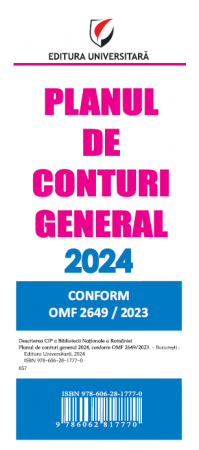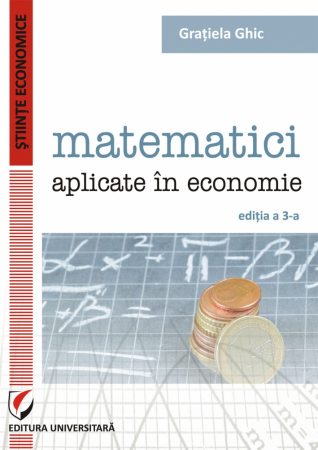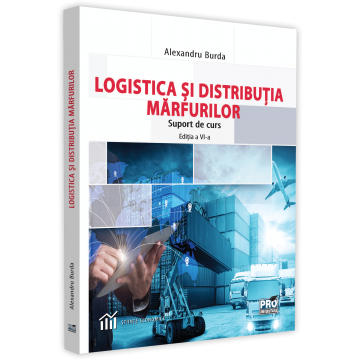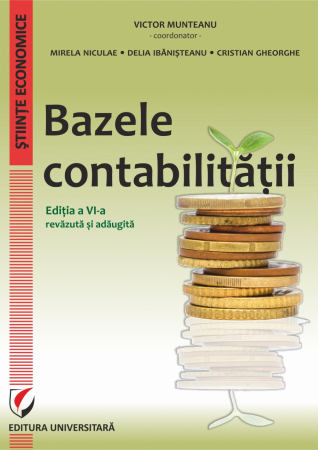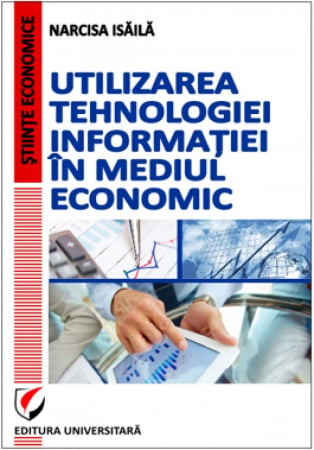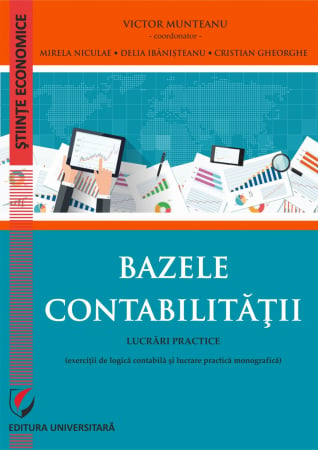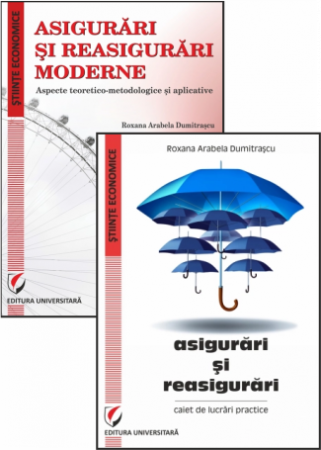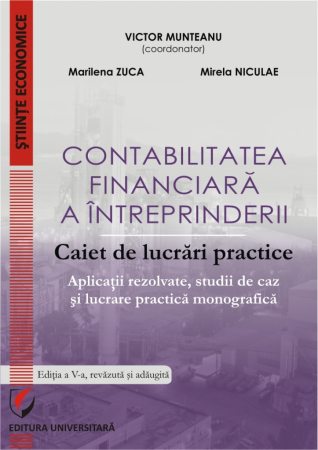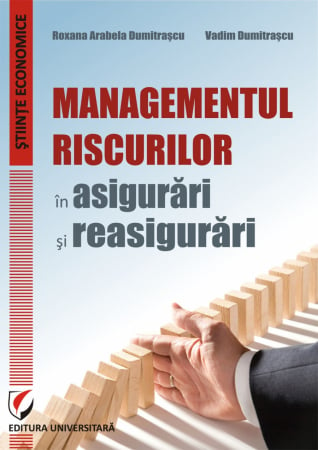Manuscript proposals: [email protected] / 0745 204 115 //// Tracking orders Individuals / Sales: 0745 200 357 / Orders Legal entities: 0721 722 783
ISBN: 978-606-28-1451-9
DOI: https://doi.org/10.5682/9786062814519
Publisher year: 2022
Edition: 2nd edition, revised and added
Pages: 262
Publisher: Editura Universitară
Author: Emilia Pascu
Product Code:
9786062814519
Do you need help?
0745 200 357
- Description
- Download (1)
- Authors
- Content
- More details
- Reviews (0)
In a world where non-compliant products are constantly threatening and in a society where living standards often lead to inadequate nutrition, the author, as a holder of the Food and Consumer Safety course, taught at the Faculty of Tourism and Commercial Management in within the Christian University Dimitrie Cantemir Bucharest, whose dean has been since 2015, draws attention to the most important aspects regarding food products and their composition.
The author, who holds a PhD in economics with a thesis on counterfeit products and consumer safety, offers a useful tool for those concerned with food quality, both for personal purposes and as staff employed in areas where food plays a role. important.
The author's concerns and fields of interest can be found in books and university courses, published in the country and abroad, as author and co-author such as: Methods for estimating the counterfeiting phenomenon, Product expertise, Product design and aesthetics, Theoretical aspects of improving customer relations , Notions regarding the quality of products and services - an instrument in economic activities, Harmonization of the Romanian regulations with those of the EU regarding the counterfeiting of goods in relation to consumer protection, Theoretical bases and grid for customer relations management, Foodstuffs. A global approach, as well as numerous articles covering issues regarding both the quality of products and services and the lives of consumers.
The author, who holds a PhD in economics with a thesis on counterfeit products and consumer safety, offers a useful tool for those concerned with food quality, both for personal purposes and as staff employed in areas where food plays a role. important.
The author's concerns and fields of interest can be found in books and university courses, published in the country and abroad, as author and co-author such as: Methods for estimating the counterfeiting phenomenon, Product expertise, Product design and aesthetics, Theoretical aspects of improving customer relations , Notions regarding the quality of products and services - an instrument in economic activities, Harmonization of the Romanian regulations with those of the EU regarding the counterfeiting of goods in relation to consumer protection, Theoretical bases and grid for customer relations management, Foodstuffs. A global approach, as well as numerous articles covering issues regarding both the quality of products and services and the lives of consumers.
-
Foodstuffs and food consumer safety, 2nd edition
Download
EMILIA PASCU
Preface / 9
Chapter 1. Elements of commodity quality theory and food consumer safety / 11
1.1. Goods and the consumer / 11
1.2. Food quality / 12
1.3. Food consumer safety / 19
1.4. Specific aspects of food standardization / 24
Tests for self - assessment / 32
Chapter 2. Water and mineral salts / 46
2.1. Water in food composition / 34
2.2. Maintaining food stability / 38
2.3. Mineral salt content in foodstuffs / 39
Tests for self - assessment / 43
Chapter 3. Carbohydrates and proteins in food composition / 46
3.1. Presentation of carbohydrates in food / 46
3.2. Classification and properties of carbohydrates / 48
3.3. Proteins in the structure of food products / 52
3.4. Classification and properties of protein in food / 53
Tests for self-assessment / 57
Chapter 4. Food lipids and vitamins / 59
4.1. Definition of lipids / 59
4.2. Lipid classification / 60
4.3. Transformations and properties of lipids in food products / 64
4.4. Vitamins / 66
Tests for self - assessment / 67
Chapter 5. Food enzymes and acids / 73
5.1. Enzymes / 73
5.2. Food acids / 76
Self-assessment tests / 80
Chapter 6. Substances added in food composition / 81
6.1. Dyes / 81
6.2. Food additives / 86
6.3. Toning and flavoring substances / 98
Tests for self-assessment / 99
Chapter 7. Accidental substances in food / 100
7.1. Contaminants / 100
7.2. Classification of contaminants / 101
7.3. The main groups of contaminants / 102
7.4. Genetically modified organisms / 106
Tests for self - assessment / 109
Chapter 8. Ensuring the stability and quality of food products / 110
8.1. Biological principles of food preservation / 110
8.2. Conservation methods / 112
8.3. Food storage, packaging and labeling / 121
Tests for self - assessment / 130
Chapter 9. Milling and bakery products / 132
9.1. Grain structure / 132
9.2. The most important cereals / 134
9.3. Cereal products / 137
Chapter 10. Vegetables, fruits and industrialized products from their processing / 149
10.1. Assortment of fresh vegetables and fruits / 149
10.2. Nutritional value of fresh vegetables and fruits / 151
10.3. Vegetable and fruit products / 153
10.4. Ecological products / 155
Tests for self - assessment / 160
Chapter 11. Sugar and sugar products / 162
11.1. Sugar / 162
11.2. Sugar products / 165
Tests for self-assessment / 174
Chapter 12. Spices and food stimulants / 176
12.1. Spices / 176
12.2. Food quality incentives / 181
Tests for self-assessment / 194
Chapter 13. Milk and milk products / 196
13.1. Chemical composition and nutritional value of milk / 196
13.2. Classification of dairy products / 198
Tests for self - assessment / 212
Chapter 14/214
Eggs, fish and fish products / 214
14.1. Structure and composition of the egg / 214
14.2. Structure and composition of fish and derived products / 219
Tests for self-assessment / 228
Chapter 15. Meat and derived products / 230
15.1. The nutritional value of meat / 230
15.2. Chemical composition of meat / 232
15.3. Meat classification / 234
Tests for self - assessment / 242
Chapter 16. Alcoholic beverages / 244
16.1. Distilled alcoholic beverages / 244
16.2. Non - distilled alcoholic beverages / 248
16.3. Wine diseases / 251
16.4. Berea / 254
Tests for self-assessment / 257
Bibliography / 259
Chapter 1. Elements of commodity quality theory and food consumer safety / 11
1.1. Goods and the consumer / 11
1.2. Food quality / 12
1.3. Food consumer safety / 19
1.4. Specific aspects of food standardization / 24
Tests for self - assessment / 32
Chapter 2. Water and mineral salts / 46
2.1. Water in food composition / 34
2.2. Maintaining food stability / 38
2.3. Mineral salt content in foodstuffs / 39
Tests for self - assessment / 43
Chapter 3. Carbohydrates and proteins in food composition / 46
3.1. Presentation of carbohydrates in food / 46
3.2. Classification and properties of carbohydrates / 48
3.3. Proteins in the structure of food products / 52
3.4. Classification and properties of protein in food / 53
Tests for self-assessment / 57
Chapter 4. Food lipids and vitamins / 59
4.1. Definition of lipids / 59
4.2. Lipid classification / 60
4.3. Transformations and properties of lipids in food products / 64
4.4. Vitamins / 66
Tests for self - assessment / 67
Chapter 5. Food enzymes and acids / 73
5.1. Enzymes / 73
5.2. Food acids / 76
Self-assessment tests / 80
Chapter 6. Substances added in food composition / 81
6.1. Dyes / 81
6.2. Food additives / 86
6.3. Toning and flavoring substances / 98
Tests for self-assessment / 99
Chapter 7. Accidental substances in food / 100
7.1. Contaminants / 100
7.2. Classification of contaminants / 101
7.3. The main groups of contaminants / 102
7.4. Genetically modified organisms / 106
Tests for self - assessment / 109
Chapter 8. Ensuring the stability and quality of food products / 110
8.1. Biological principles of food preservation / 110
8.2. Conservation methods / 112
8.3. Food storage, packaging and labeling / 121
Tests for self - assessment / 130
Chapter 9. Milling and bakery products / 132
9.1. Grain structure / 132
9.2. The most important cereals / 134
9.3. Cereal products / 137
Chapter 10. Vegetables, fruits and industrialized products from their processing / 149
10.1. Assortment of fresh vegetables and fruits / 149
10.2. Nutritional value of fresh vegetables and fruits / 151
10.3. Vegetable and fruit products / 153
10.4. Ecological products / 155
Tests for self - assessment / 160
Chapter 11. Sugar and sugar products / 162
11.1. Sugar / 162
11.2. Sugar products / 165
Tests for self-assessment / 174
Chapter 12. Spices and food stimulants / 176
12.1. Spices / 176
12.2. Food quality incentives / 181
Tests for self-assessment / 194
Chapter 13. Milk and milk products / 196
13.1. Chemical composition and nutritional value of milk / 196
13.2. Classification of dairy products / 198
Tests for self - assessment / 212
Chapter 14/214
Eggs, fish and fish products / 214
14.1. Structure and composition of the egg / 214
14.2. Structure and composition of fish and derived products / 219
Tests for self-assessment / 228
Chapter 15. Meat and derived products / 230
15.1. The nutritional value of meat / 230
15.2. Chemical composition of meat / 232
15.3. Meat classification / 234
Tests for self - assessment / 242
Chapter 16. Alcoholic beverages / 244
16.1. Distilled alcoholic beverages / 244
16.2. Non - distilled alcoholic beverages / 248
16.3. Wine diseases / 251
16.4. Berea / 254
Tests for self-assessment / 257
Bibliography / 259
From time immemorial, man has been concerned with providing daily food that would allow him to survive and live. As soon as he was aware of the many needs of his body, he sought to improve and diversify his diet by drawing on natural animal and plant resources.
With the development of society and due to the emergence of new means of processing existing natural raw materials, food has undergone a different evolution, moving from organic food, based on whole natural foods to that based on cultural foods. Currently, the consumer has a complex diet, desirable as balanced as possible so as to provide the body with all the necessary nutrients.
Nutrition is a process by which more than fifty substances (essential nutrients) are introduced into the body, necessary for growth, development, development of vital processes and energy supply and for modern man, it must be adapted to the conditions in which it carries out its daily activity. so that he remains physically and mentally healthy.
Increasingly sedentary life, stress, lack of physical activity, the fact that intellectual work has an increasing share, makes modern man consume high amounts of stimulants (coffee, tea, alcohol) and ready-made foods, with a high content of chemical additives, misled by the tastes that deceive us most of the time by urging harmful, devitalized foods. These negative aspects of the current diet require an education in children in order to adopt and promote a rational diet. We are already facing cases of childhood obesity, as a result of the increasing and more frequent consumption, from an increasingly young age, of unsuitable foods (junk ‑ food) which through attractive organoleptic characteristics urges to consumption.
Rational nutrition determines the consumption of foods with a complete and balanced content of nutrients, vitamins and mineral salts. Given the extraordinary offer on the food market, a rational diet is not difficult to achieve. The available goods are able to satisfy the most diverse tastes, ensuring at the same time the rational nutrition towards which we must strive.
The commodity is the material correspondent of a determined consumption need. This material correspondent created to be made by the market - material object (including as a support for various information) - appears in two hypostases: as a product ‑ entity until the contracting phase, then as a batch of identical goods, homogeneous and finished products until the moment of sale, when it is transmitted to the consumer, again, as a product ‑ entity. Traditional merchandise defines goods as a movable economic good intended for exchange, which meets certain requirements of materiality and transferability. This can be considered, on the one hand, a means of satisfying particular needs derived from the subjective desires and aspirations of the individual, and on the other hand, a system of means of production derived from the social consumption system.
At present, the consumer behavior of consumers tends to become more uniform due to the increasingly differentiated, more complex supply of goods that better meets expectations. In reality, however, consumption is based on a small number of grains, potatoes, meat, eggs of birds grown industrially for this purpose, emulsified and refined fats.
Modern goods, viewed as a whole, have a functional component - having a precise destination, it meets a well-defined purpose; an instrumental component - the technical ‑ economic circulation of the goods is based on a judiciously established technical and commercial logistics; an aesthetic component - the commodity being a form of mediation between the needs of consumers and the possibilities of producers, based on the design and aesthetics of the product and last but not least includes a social component, because it generates a certain satisfaction in consumption, determines preferences and builds consumer loyalty. namely social status.
Taking into account the daily demand that acts on consumers, it is especially important to pay more attention to food and implicitly to food quality.
A healthy diet involves, first of all, knowing the truth about food and secondly eliminating harmful substances from the daily diet. Eating healthy, relying on authentic information, can prevent discomfort caused by diseases due to a chaotic diet.
Ignoring the direct relationship between food and health, the negative effects will not be long in coming, which is why this material is a useful tool for all food consumers, interested in knowing the basics of a rational, healthy diet.
With the development of society and due to the emergence of new means of processing existing natural raw materials, food has undergone a different evolution, moving from organic food, based on whole natural foods to that based on cultural foods. Currently, the consumer has a complex diet, desirable as balanced as possible so as to provide the body with all the necessary nutrients.
Nutrition is a process by which more than fifty substances (essential nutrients) are introduced into the body, necessary for growth, development, development of vital processes and energy supply and for modern man, it must be adapted to the conditions in which it carries out its daily activity. so that he remains physically and mentally healthy.
Increasingly sedentary life, stress, lack of physical activity, the fact that intellectual work has an increasing share, makes modern man consume high amounts of stimulants (coffee, tea, alcohol) and ready-made foods, with a high content of chemical additives, misled by the tastes that deceive us most of the time by urging harmful, devitalized foods. These negative aspects of the current diet require an education in children in order to adopt and promote a rational diet. We are already facing cases of childhood obesity, as a result of the increasing and more frequent consumption, from an increasingly young age, of unsuitable foods (junk ‑ food) which through attractive organoleptic characteristics urges to consumption.
Rational nutrition determines the consumption of foods with a complete and balanced content of nutrients, vitamins and mineral salts. Given the extraordinary offer on the food market, a rational diet is not difficult to achieve. The available goods are able to satisfy the most diverse tastes, ensuring at the same time the rational nutrition towards which we must strive.
The commodity is the material correspondent of a determined consumption need. This material correspondent created to be made by the market - material object (including as a support for various information) - appears in two hypostases: as a product ‑ entity until the contracting phase, then as a batch of identical goods, homogeneous and finished products until the moment of sale, when it is transmitted to the consumer, again, as a product ‑ entity. Traditional merchandise defines goods as a movable economic good intended for exchange, which meets certain requirements of materiality and transferability. This can be considered, on the one hand, a means of satisfying particular needs derived from the subjective desires and aspirations of the individual, and on the other hand, a system of means of production derived from the social consumption system.
At present, the consumer behavior of consumers tends to become more uniform due to the increasingly differentiated, more complex supply of goods that better meets expectations. In reality, however, consumption is based on a small number of grains, potatoes, meat, eggs of birds grown industrially for this purpose, emulsified and refined fats.
Modern goods, viewed as a whole, have a functional component - having a precise destination, it meets a well-defined purpose; an instrumental component - the technical ‑ economic circulation of the goods is based on a judiciously established technical and commercial logistics; an aesthetic component - the commodity being a form of mediation between the needs of consumers and the possibilities of producers, based on the design and aesthetics of the product and last but not least includes a social component, because it generates a certain satisfaction in consumption, determines preferences and builds consumer loyalty. namely social status.
Taking into account the daily demand that acts on consumers, it is especially important to pay more attention to food and implicitly to food quality.
A healthy diet involves, first of all, knowing the truth about food and secondly eliminating harmful substances from the daily diet. Eating healthy, relying on authentic information, can prevent discomfort caused by diseases due to a chaotic diet.
Ignoring the direct relationship between food and health, the negative effects will not be long in coming, which is why this material is a useful tool for all food consumers, interested in knowing the basics of a rational, healthy diet.
If you want to express your opinion about this product you can add a review.
write a review

6359.png)
![Foodstuffs and food consumer safety, 2nd edition [1] Foodstuffs and food consumer safety, 2nd edition [1]](https://gomagcdn.ro/domains/editurauniversitara.ro/files/product/large/marfuri-alimentare-si-securitatea-consumatorului-de-alimente-editia-a-ii-a-6873-2946.jpg)
